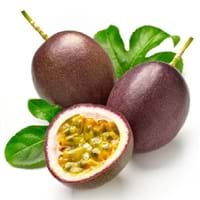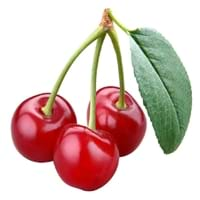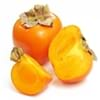Health Benefits
Asthma treatment, Heart care, Regulates Blood Sugar, Muscle pain relief, Reduces nervous tension
Arthritis prevention, Cancer prevention, Gout treatment, Regulation of heart rate, Treatment of osteoarthritis
General Benefits
Boosts immune system, Controls blood pressure, Digestive aid, Fights against infections, Helps in weight loss
Anti oxidant properties, Anti-inflammatory properties, Controls blood pressure, Cures headache, Digestive aid
Skin Benefits
Anti-aging benefits, Skin revitalization
Anti-aging benefits, Brightens and lightens complexion, Skin rejuvenation, Treatment of dark spots
Hair Benefits
Protects hair
Acts as moisturizer, Protects hair, Regulates hair growth, Rejuvenates scalp
Allergy Symptoms
Anaphylaxis, Breathing difficulty, Decrease in blood pressure, Dizziness, Skin rash, Swelling of face, Swelling of mouth, tongue or lips
Anaphylaxis, Breathing difficulty, Fainting, Itching, Nasal congestion, Nausea, Swelling of mouth, tongue or lips, Tingling sensation in mouth, Vomiting, Wheezing
Side Effects
Stressed heart, Nausea, Vomiting, Possibly unsafe during pregnancy
Abdominal cramps, Allergic reaction, Bloating, Intestinal gas
Best Time to Eat
As a snack in the late afternoon, Don't consume at night and before bed, Morning time (before lunch), Strictly avoid empty stomach
Best if taken as a breakfast (or empty stomach), As a snack in the late afternoon, Don't eat after meal, Morning time (before lunch)
Vitamin B5 (Pantothenic Acid)
Not Available
Vitamin C (Ascorbic Acid)
Vitamin K (Phyllochinone)
Calories in Fresh Fruit with Peel
Not Available
Calories in Fresh Fruit without Peel
Not Available
Calories in Frozen Form
Not Available
Season
All seasons
Summer
Varieties
Australian Purple, Common Purple, Kapoho Selection, Pratt Hybrid, University Selection No. B-74, Waimanalo Selection and Yee Selection
Evan, Mesabi, Meteor, Northstar, Montmorency and Mongolian
Taste
Sweet, Tart
Sweet-Sour
Origin
Argentina, Brazil, Paraguay
Europe, Western Asia
Grows on
Not Available
Trees
Soil Type
Sandy loam
Sandy
Climatic Conditions
Frost free, Sunny, Warm
Cold
Facts about
- Passion fruit tree can grow up to 20 feet in a year.
- More than 200 species of passion fruit are found near Amazon river.
- Oil extracted from its seeds is used in various cosmetics.
- Using 1/4 tablespoon of almond extract with cherries, brings out the real flavor of cherries.
- In earlier times, serving cherry pie with ice cream was prohibited.
- 23 April is National cherry cheese cake day.
Top Producer
Brazil
Turkey
Other Countries
Colombia, Ecuador, Indonesia, Kenya, Peru
Albania, Armenia, Austria, Azerbaijan, Belarus, Croatia, Denmark, Germany, Hungary, Iran, Italy, Macedonia, Moldova, Poland, Russia, Serbia, Ukraine, United States of America, Uzbekistan
Top Importer
Brazil
Germany
Top Exporter
Ecuador
Poland
Botanical Name
Passiflora edulis
Prunus cerasus
Synonym
Passiflora edulis f. edulis or Passiflora edulis f. flavicarpa
Not Available
Subkingdom
Tracheobionta
Tracheobionta
Division
Magnoliophyta
Magnoliophyta
Class
Magnoliopsida
Magnoliopsida
Subclass
Dillenhidae
Rosidae
Order
Malpighiales
Rosales
Family
Passifloraceae
Rosaceae
Species
P. edulis
P. cerasus
Generic Group
Passion Flower
Rose
Difference Between Passionfruit and Sour Cherry
We might think that Passionfruit and Sour Cherry are similar with respect to nutritional value and health benefits. But the nutrient content of both fruits is different. Passionfruit and Sour Cherry Facts such as their taste, shape, color, and size are also distinct. The difference between Passionfruit and Sour Cherry is explained here.
The amount of calories in 100 gm of fresh Passionfruit and Sour Cherry with peel is Not Available and 50.00 kcal and the amount of calories without peel is 97.00 kcal and Not Available respectively. Thus, Passionfruit and Sour Cherry belong to High Calorie Fruits and Low Calorie Fruits category.These fruits might or might not differ with respect to their scientific classification. The order of Passionfruit and Sour Cherry is Malpighiales and Rosales respectively. Passionfruit belongs to Passifloraceae family and Sour Cherry belongs to Rosaceae family. Passionfruit belongs to Passiflora genus of P. edulis species and Sour Cherry belongs to Prunus genus of P. cerasus species. Beings plants, both fruits belong to Plantae Kingdom.









